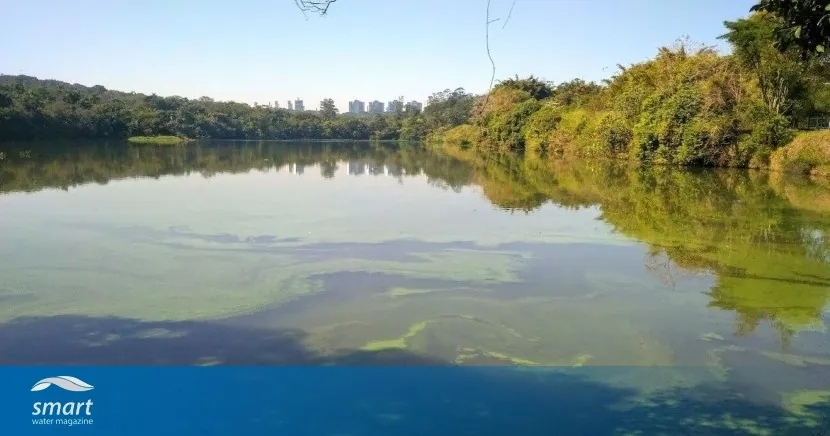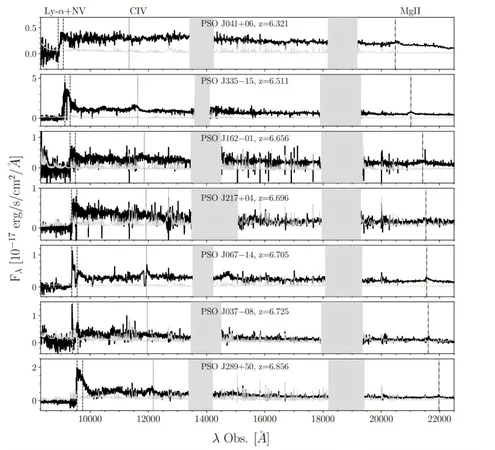
Unveiling a Century of Metal Pollution in São Paulo: A Deep Dive into Sediment Layers
2025-04-30
Author: Jia
The hidden tale of metal pollution throughout São Paulo, Brazil's bustling metropolis, is layered beneath the tranquil surface of Garças Lake. Researchers have successfully revealed a century's worth of environmental history through sediment analysis, showcasing the undeniable fingerprint of industrial expansion and population growth.
Paleolimnology: A Window to the Past
Using a technique known as paleolimnology, scientists have pieced together the past environmental changes in this key area. Samples from Garças Lake, located within Ipiranga Fountains State Park, have shown a direct correlation between the rise of industries, a booming population, and the increased levels of metal pollution over the last hundred years.
Sediment as a Historical Archive
As Tatiane Araujo de Jesus, lead researcher and coordinator at the Federal University of ABC, points out, sediments are like nature’s time capsules, capturing every significant event in a drainage basin. Garças Lake was a prime choice for this study as it has never been dredged, allowing an uninterrupted historical record of pollutants.
Decoding the Layers: How It Works
To unlock the sedimentary secrets, divers obtained core samples from the lake's bottom. Unlike traditional carbon-14 dating, the team used lead-210 isotopes to date the layers, effectively creating a timeline of environmental changes akin to flipping through the pages of a history book. Each layer represents a different period, revealing the levels of metal pollution over time.
Three Distinct Periods of Pollution
The findings highlight three key phases in São Paulo's metal pollution journey. Pre-1950, during the pre-industrial period, showcased low metal concentrations, indicating minimal human interference. However, after 1950, pollution began to rise sharply, driven by factors such as increased air traffic at nearby Congonhas Airport and the burgeoning automotive industry.
The Pollution Peak and Its Aftermath
The decades between 1975 and 2000 marked a peak in pollution levels, with alarming rises in lead, nickel, iron, chromium, and copper. This spike coincided with the construction of the Imigrantes Highway, which significantly boosted vehicular traffic and industrial emissions.
A Silver Lining: Environmental Policies at Work
One of the most promising revelations from the study was a notable decrease in sediment lead levels post-1986, following Brazil's ban on leaded gasoline. This marked a tangible success for environmental policies – proving that legislative measures can lead to real change.
Challenges Ahead
Despite promising reductions in lead, other metals like cobalt, nickel, and copper continued to rise, likely due to shifts in industrial practices. A nearby steel mill's transition from steel production to manufacturing metal artifacts may have altered the pollution landscape.
Sediments: The Unsung Heroes of Environmental Monitoring
This study not only charts the progression of pollution in São Paulo but also underscores the significance of sediments as environmental indicators. Science offers pathways to restoration, using historical data to inform contemporary environmental strategies.
A Call to Action
De Jesus warns that simply designating conservation areas is insufficient if surrounding pollution isn't handled. He urges stronger public policies to combat industrial and vehicular emissions, emphasizing the necessity for ongoing environmental restoration efforts.
With insightful historical context, this research could guide São Paulo towards a cleaner, more sustainable future. Understanding how pollution has evolved can empower decision-makers to enhance the city’s environmental quality.




 Brasil (PT)
Brasil (PT)
 Canada (EN)
Canada (EN)
 Chile (ES)
Chile (ES)
 Česko (CS)
Česko (CS)
 대한민국 (KO)
대한민국 (KO)
 España (ES)
España (ES)
 France (FR)
France (FR)
 Hong Kong (EN)
Hong Kong (EN)
 Italia (IT)
Italia (IT)
 日本 (JA)
日本 (JA)
 Magyarország (HU)
Magyarország (HU)
 Norge (NO)
Norge (NO)
 Polska (PL)
Polska (PL)
 Schweiz (DE)
Schweiz (DE)
 Singapore (EN)
Singapore (EN)
 Sverige (SV)
Sverige (SV)
 Suomi (FI)
Suomi (FI)
 Türkiye (TR)
Türkiye (TR)
 الإمارات العربية المتحدة (AR)
الإمارات العربية المتحدة (AR)